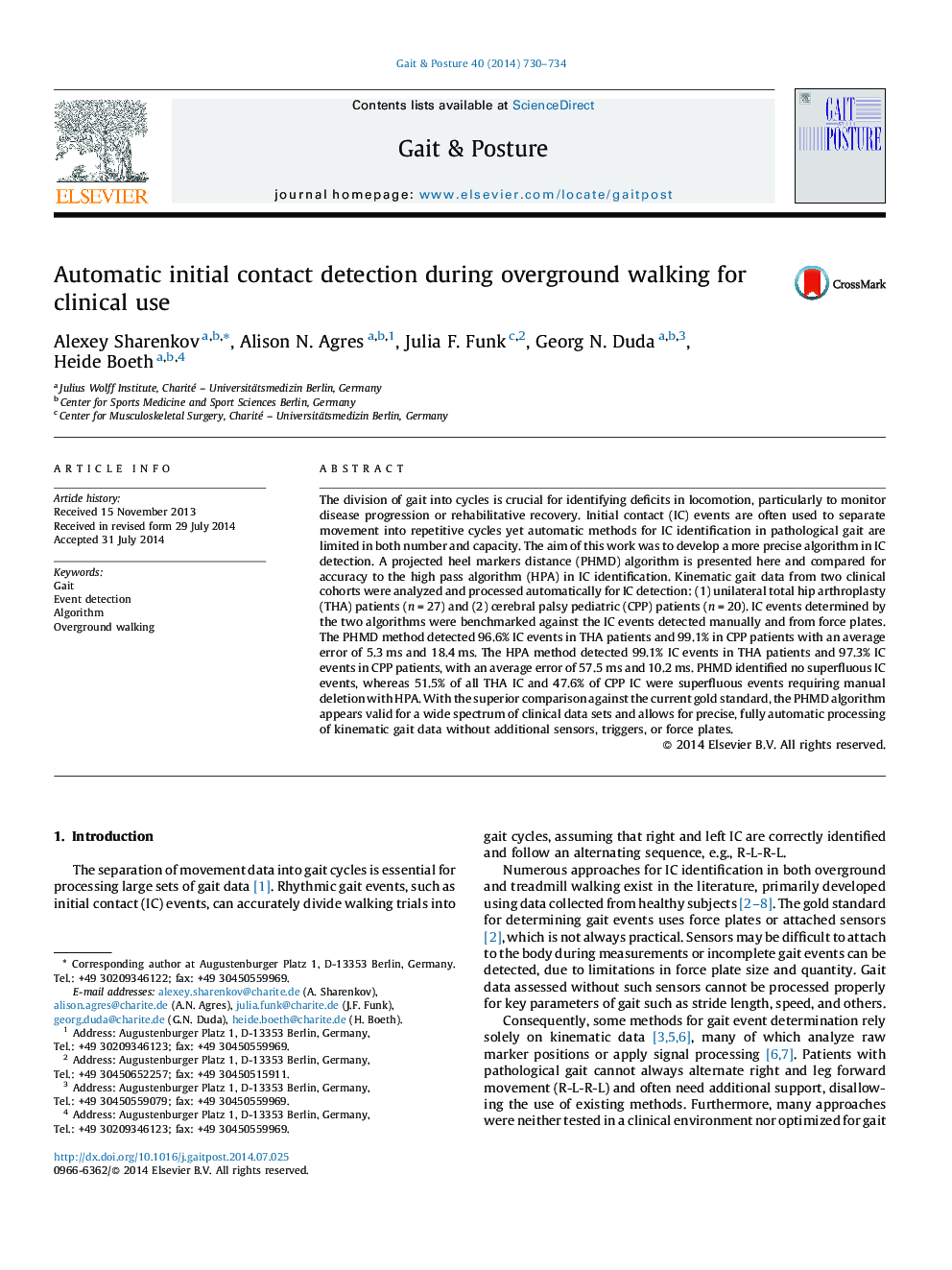| کد مقاله | کد نشریه | سال انتشار | مقاله انگلیسی | نسخه تمام متن |
|---|---|---|---|---|
| 6206004 | 1603853 | 2014 | 5 صفحه PDF | دانلود رایگان |
The division of gait into cycles is crucial for identifying deficits in locomotion, particularly to monitor disease progression or rehabilitative recovery. Initial contact (IC) events are often used to separate movement into repetitive cycles yet automatic methods for IC identification in pathological gait are limited in both number and capacity. The aim of this work was to develop a more precise algorithm in IC detection. A projected heel markers distance (PHMD) algorithm is presented here and compared for accuracy to the high pass algorithm (HPA) in IC identification. Kinematic gait data from two clinical cohorts were analyzed and processed automatically for IC detection: (1) unilateral total hip arthroplasty (THA) patients (n = 27) and (2) cerebral palsy pediatric (CPP) patients (n = 20). IC events determined by the two algorithms were benchmarked against the IC events detected manually and from force plates. The PHMD method detected 96.6% IC events in THA patients and 99.1% in CPP patients with an average error of 5.3 ms and 18.4 ms. The HPA method detected 99.1% IC events in THA patients and 97.3% IC events in CPP patients, with an average error of 57.5 ms and 10.2 ms. PHMD identified no superfluous IC events, whereas 51.5% of all THA IC and 47.6% of CPP IC were superfluous events requiring manual deletion with HPA. With the superior comparison against the current gold standard, the PHMD algorithm appears valid for a wide spectrum of clinical data sets and allows for precise, fully automatic processing of kinematic gait data without additional sensors, triggers, or force plates.
Journal: Gait & Posture - Volume 40, Issue 4, September 2014, Pages 730-734
